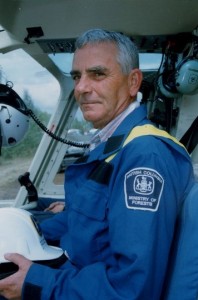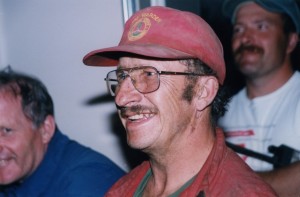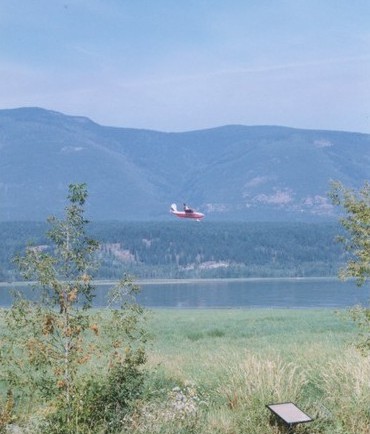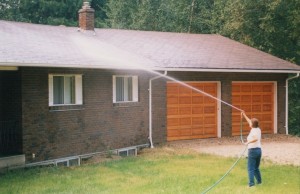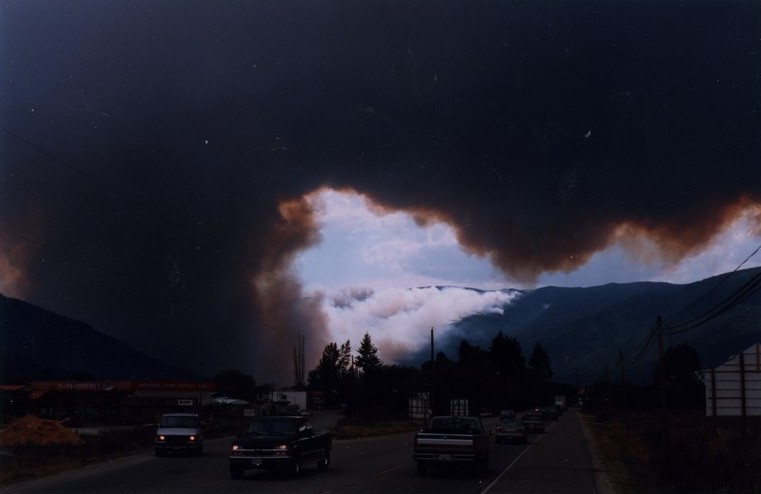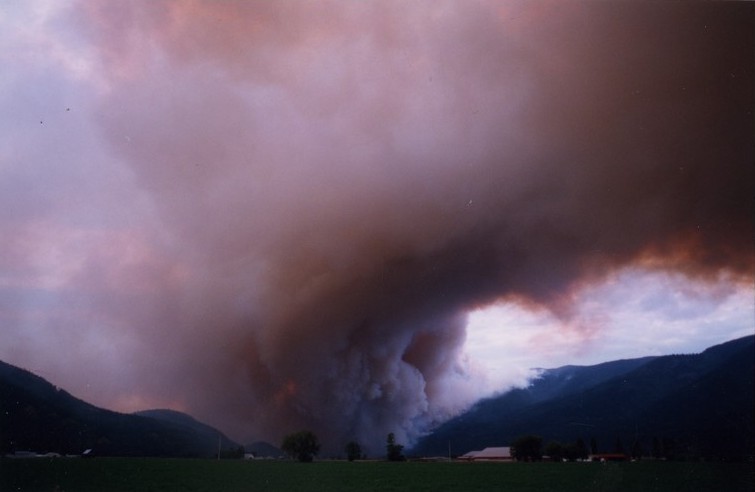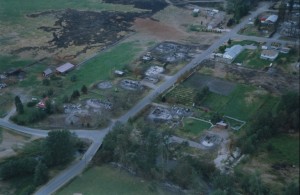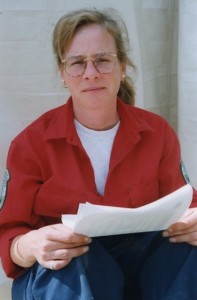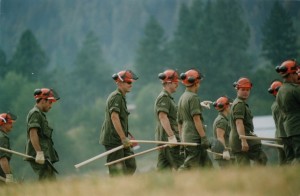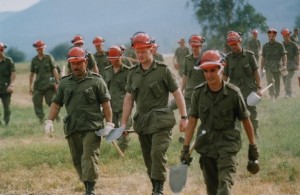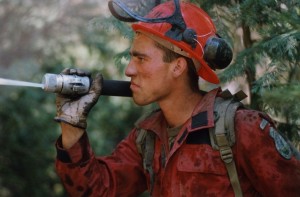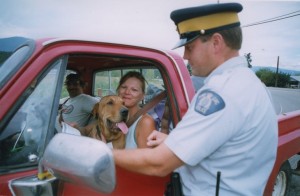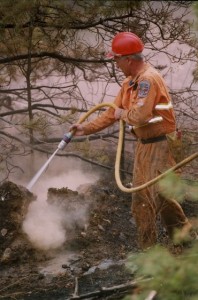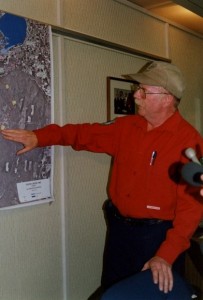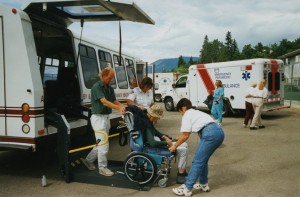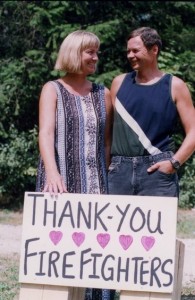Timeline
Day 1: Wed. July 29
- Just after 15:00 a lightning strike hit the Fly Hills starting a blaze.
- Salmon Arm Fire Zone’s Resource Officer Wayne Langlois flew up in a fixed wing airplane to assess the situation.
- Forest Service personnel Larry Osachoff called in for air tanker support. Within 45 minutes of the first report, aircraft began to drop retardant.
- The Kamloops Fire Centre directed Fire Warden Ed Chaykowski to inspect the site. It took Chaykowski 50 minutes to get there.
- Resources assigned: one reconnaissance fixed-wing aircraft, one light reconnaissance helicopter, three birddog aircraft, four air tankers, five pieces of heavy equipment, a five person initial attack crew, two fire wardens (one with a crew), and a Salmon Arm Fire Zone Protection Officer.
- The fire continued to cross retardant guards. Kamloops Fire Centre was asked to supply one unit crew and one fire boss for the next day.
- The request for resources increased to include a second (20 person) unit crew, a Martin Mars air tanker, an overhead team, a fixed wing air tanker, and a heavy helicopter.
Day 2: Thurs. July 30
- The fire reached 20 hectares in size. Access was limited due to steep terrain, slash, and beetle-killed timber. The Martin Mars air tanker and two heavy helicopters created a guard of fire retardant. Martin Mars air tanker 832 (C-FLYK) made 16 drops and returned to its home base in Sproat Lake.
- Resources included: a 20–person crew, one Martin Mars, six light helicopters, two heavy helicopters and 10 pieces of heavy equipment. Three fire wardens assigned to the fire. Wardens remained on the fire for its duration.
Day 3: Fri. July 31
- The fire information team reported firefighters made good progress. Aviation fuel did not arrive at the Salmon Arm municipal airport as planned.
Day 4: Sat. Aug. 1
- Fire size reached 40 hectares. Two firefighting crews, six helicopters and heavy ground equipment were in use. A community liaison was named for the residents of Silver Creek.
Day 5: Sun. August 2
- Firefighters made good progress on the 41 hectare wildfire with two crews, four helicopters and heavy ground equipment.
Day 6: Mon. August 3
- The fire information team reported that the fire had reached 45 hectares in size. The Martin Mars air tanker 832 (C-FLYL) was called into service and worked the fire until August 15th.
- Firefighters numbered 70.
Day 7: Tues. Aug. 4
- Sixty homes were put on evacuation alert after strong gusty winds spread the fire to 300 hectares. A 24 hour emergency operations centre was set up at the Salmon Arm Fire Hall. The Martin Mars air tanker 820 (C-FLYK) returned and stayed on the fire until August 15th.
Day 8: Wed. August 5
- The fire remained 3 kilometers from 60 homes in Silver Creek. In the afternoon a cold front hit bringing strong winds.
- Fire crews received an extreme weather behavior warning. At 13:15 the fire spread rapidly. Aircraft and personnel shifted focus to preservation of life and property in the interface area. Bulldozers built guards near valley homes and barns.
- The area under evacuation alert changed to an evacuation order. 500 Silver Creek residents left.
- Wind speeds calculated at 82 km per hour on the ground and air gusts calculated at 120 km per hour.
- Resources included four unit crews (84 persons), two Martin Mars, nine long-term retardant tankers, eight light helicopters, five medium helicopters, four heavy helicopters, and 48 pieces of heavy equipment.
- Just after 17:00 air tankers broke off action due to concerns for aircraft and pilot safety.
- Press report 40 structures and 16 homes were destroyed in the Silver Creek area. The fire jumped the Salmon Valley and made a run up Mt. Ida in 20 minutes. Flames measured 125 metres in height.
- Shuswap Lake General Hospital administration decided to go ahead with a voluntary evacuation.
- Parts of Salmon Arm put on evacuation alert. The fire reached 550 hectares.
Day 9: Thurs. August 6
- Fire was reported to be stable, helped by calm conditions overnight. The fire camp was evacuated. Aggressive bombing and ground work was undertaken. The fire reached 800 hectares.
Day 10: Fri. August 7
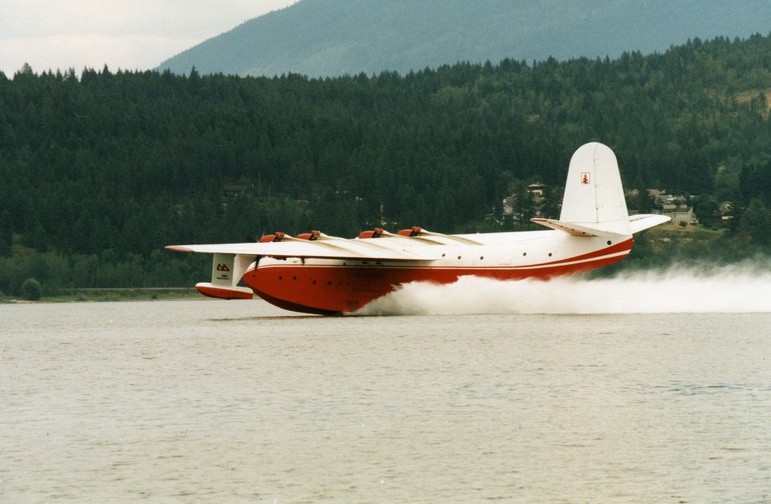
Photographed in the Salmon Arm Bay of Shuswap Lake, the Philippine Mars C-FLYK air tanker carried over 27,000 litres of water.
- Fire remained constant, but the size was upgraded to over 3,000 hectares. The Martin Mars air tanker and other air and ground crews fought the fire aggressively.
Day 11: Sat. August 8
- Fire was again reported stable, but a cold front with high winds was forecast for Monday. The fire was estimated at 4,700 hectares. Evacuation orders and alerts remained in effect. Air and ground crews continued to work hard on the fire. Much needed help from the Department of National Defense – 100 Princess Patricia Canadian Light Infantry (PPCLI) soldiers arrived.
Day 12: Sun. August 9
- PPCLI soldiers were given S100 firefighting course.
- An evacuation order was issued affecting 7,000 residents of Salmon Arm and the Salmon Valley. Reception areas were set up in Kamloops and Vernon.
- Premier Glen Clark visited Salmon Arm and declared a provincial state of emergency.
- Fire Chief Ken Tebo put in a request for help to colleagues throughout the province. Overnight fire agencies send more than 40 fire trucks, tenders, and crews from all over the province.
Day 13: Mon. August 10
- PPCLI soldiers put to work on the line.
- The community waited for expected high winds to come in, but they did not appear.
Day 14: Tues. August 11
- The evacuation order was lifted for all areas except the Salmon Valley. The fire size grew slightly on the west side to 5,200 hectares.
Day 15: Wed. August 12
- Salmon Arm residents continued to return to their homes, but remained under an evacuation alert. Residents in the Salmon Valley and parts of Foothill Road and Gleneden areas remained under an evacuation order. Ground crews strengthened the guard created by bulldozers around the perimeter of the fire and searched for hot areas about Gleneden and in the bowl area of Mount Ida. Helicopters and the Martin Mars air tanker flew late in the day to avoid interfering with the work of the ground crews. Weather was still. Cold front and winds were expected.

Princess Patricia Light Infantry Master Corporal Wayne Sinclair stands by wheels of a John Deere skidder hauling a tank of water.
Day 16: Thurs. August 13
- The fire size measured 5,500 hectares. The weather was once again hot, but without significant wind activity. A controlled burn was held in the Fly Hills to eliminate the potential fuel for flare ups. Crews continued to work on the ground to stop hot spots and reinforce guards. A Rapattack crew built a small helipad in the canyon near Silver Creek and worked on hot spots in the area. The zones affected by the evacuation alert and order remained the same. Many of the RCMP called in to help with the evacuation returned to their home communities.
- The SALMAR Community Association hosted a free movie event for 200 firefighters – including free soft drinks and popcorn.
Day 17: Fri. August 14
- The fire was listed at 6,300 hectares after a full geographical positioning system mapping process was undertaken.
- With dozens of hot spots, the blaze was described as a “sleeping giant.” The fire jumped the south guard, but was quickly stopped.
- Wind gusts of about 50 kilometers per hour moved through causing flare ups – especially in the southern flank nearest to Silver Creek. Residents in the Salmon Valley were evacuated, while the rest remained under an evacuation alert.
Day 18: Sat. August 15
- Residents of the Salmon Valley returned to their homes as the evacuation order for the area was lifted. They remained on a ten minute alert. The alert for parts of Salmon Arm, Ranchero and Deep Creek was also lifted.
- Some precipitation finally hit the area in the evening, accompanied by gusts of wind up to 30 kilometers per hour.
- The Fire Boss reassessed resources, deciding whether or not to move some firefighters from Mount Ida to Silver Creek and cut back some of the firefighters. The Martin Mars air tankers returned home to Sproat Lake on Vancouver Island, but remained on call.
Day 19: Sun. August 16
- The Shuswap Lake General Hospital acute care unit prepared to resume normal operations. Plans were also put in place to resume activities by
August 19.
Day 20: Mon. August 17
- The evacuation alerts for the Salmon River Valley and Area Two, west of the Trans Canada Highway, were lifted by the provincial fire commissioner. Cool weather continued to help firefighters. First group of 100 PPCLI left for Edmonton. First Combat Engineer Regiment (1CER) replaced Princess Patricia soldiers.
Day 21: Tues. August 18
- The fire on Mount Ida was declared under control, but work continued. Word came from the Premier’s office that an external review would be done.
Day 25: Fri. August 21
- First Combat Engineer Regiment (1CER) returned to Edmonton.
Day 81: Tues. October 6
- The last hot spot was found – a single tree had been burning for almost two months. Fire Warden Ed Chaykowski cut down the burning tree. Chaykowski was also the first person to walk into the fire.
Day 89:
Wed. October 14
- Fire bill was already in the millions…bills continued to pour in.
Day 92:
Sat. October 17
- Ombudsman was announced to do a fire review.
Total firefighting cost for the Silver Creek Fire – 15 million dollars.
Photo credit:
James Murray, Salmon Arm Observer, c. 1998
Sources:
- On-the-scene firefighters
- Radiotelephone log from Queest Lookout Tower (Queest Lookout Tower Fonds, Salmon Arm Museum)
- Salmon Arm Observer
- The Silver Creek Fire Review Public Report Number 39 (PDF, 7.4 MB)
- Firestorm 2003 Provincial Review by the Honourable Gary Filmon P.C., O.M.


